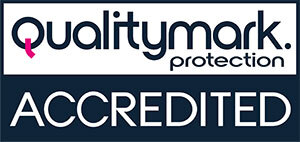Does Insulation Keep A House Cool During Summer? Written by: Energy Efficient You Published: 18th July 2024 Get in Touch Does Insulation …
Get An In Depth Assessment Of Your Property
Need to know where to start when it comes to making your home more energy efficient?
At Energy efficient you, we’re here to help you improve your energy efficiency. We will complete a detailed survey of your property and produce an energy report using the RdSAP methodology.
What Is A Retrofit Assessment?
A retrofit assessment is an in-depth assessment of a property bases on the following:
- An Energy Assessment
- A Condition Assessment of the property
- An Occupancy Assessment
Retrofit assessors play a significant role within the PAS 2035 process as they collect and provide property data and information. PAS 2035 is a specification that is referred to as ‘whole-house’ or ‘whole-building’ retrofit. This is an approach to the installation of energy efficiency measures (EEMs) which considers the requirements of the entire building, both from a technical position that consider factors such as occupancy comfort.
Every home that is to be subjected to energy retrofit work must first be assessed by a retrofit assessor. The main responsibility is to collect and provide information to the retrofit coordinator about the dwelling.
Our retrofit assessor will complete a survey of your property including construction details and layout survey, what your existing heating and hot water provision is and how it is controlled. Our retrofit coordinator will identify any underlying issues including damp or condensation.
Why Do I Need A Retrofit Assessment?
As retrofit assessors we aim to gain an understanding of how you use the property (heating patterns, ventilation, energy bills) and the desired outcome from the energy saving improvements.
As a result of the retrofit assessment an energy report will be produced as a starting point using the RdSAP methodology.
The condition report will also detail any building defects like damp/condensation issues or any other building problems that require attention before any energy saving measures can be installed.
Finally, an occupancy evaluation will look at your previous year’s energy bills and the way you use energy in your house. This combined with the energy report will show a clear understanding of how energy is used and where improvements can be made.
How Much Do Retrofit Assessors Charge For A Retrofit Assessment?
Energy assessments within England and Wales are charged £175 + VAT. To book your EPC assessment with us today, give us a call at 0800 907 8209 or email us at info@energyefficientyou.co.uk
How Long Do Retrofit Assessments Take?
Depending on the size of the house and what your requirements are, a survey can take approximately 2 – 3 hours, we also spend a further half day working on desk top study.
How Do Retrofit Assessments Work?
Retrofit assessors will split the survey into two parts – the desk top study and the site survey. It is beneficial to complete the desk-based study first before visiting a property.
The information from the desk-based study needs to be verified in the on-site survey at the property.
The desk-based study involves:
- Researching property history and significance. The National Heritage List for England (NHLE) includes all nationally protected historic buildings and sites in England.
- Review service record drawings that may be kept in operation and maintenance manuals or an archive.
- Review inspection reports such as electrical, gas and mechanical systems reports.
- Collect information on supplies and electricity, gas and water usage.
- Check the asbestos register for property.
- Collect any environment monitoring data such as temperature and humidity records.
The property survey involves:
- Assessing the condition of systems and components
- Assessing if any services can be retained and reused.
- Referring to the heritage significance of the systems.
- Reviewing the capacity of current systems.
- Assessing issues for maintenance, replacement or new work.
- Identify any maintenance issues that needs to be addressed.
- Identify any hazards that could be considered dangerous in the property.
- Conduct building inspections such as thermal imaging.
How Long Is A Retrofit Assessment Valid For?
The validity period of a retrofit assessment can vary widely based on factors such as the nature of the assessment, the specific improvements made, regulations, and the industry standards in the relevant region. Here are a few considerations:
In some cases, regulatory bodies might specify a timeframe for re-assessments. For example, certain building codes or energy efficiency standards might require periodic re-assessment to ensure ongoing compliance.
The validity of a retrofit assessment could also be influenced by rapid technological advancements. If new technologies emerge that offer significantly improved energy efficiency solutions, it might be advisable to revisit the assessment sooner to take advantage of these advancements.
Changes in the way a building or system is operated can impact its energy efficiency. If there are substantial changes in occupancy, usage patterns, or operating procedures, a reassessment might be necessary.
Changes in energy prices or policies, such as the introduction of new incentives or regulations, might necessitate a reassessment to evaluate the financial feasibility of further improvements.
Given these considerations, it’s essential to consult with our energy efficiency experts to determine the recommended frequency for reassessments. While there might not be a universally fixed validity period for retrofit assessments, staying informed about changes in regulations, technologies, and best practices will help you make informed decisions about when to revisit and update your energy efficiency strategies.
What Is The Process Of A Retrofit Assessment?
The process of a retrofit assessment involves a series of steps aimed at evaluating an existing structure, system, or facility to identify opportunities for improvement, upgrade, or modification. This assessment is commonly performed to enhance energy efficiency, safety, compliance with regulations, and overall performance. Below is a general outline of the process:
- Define Goals and Scope – Clearly define the objectives of the retrofit assessment. What specific improvements are you aiming to achieve? (e.g., energy efficiency, safety enhancements, compliance upgrades) Identify the scope of the assessment, including which parts of the building or system will be evaluated.
- Gather Data and Documentation – Collect existing documentation such as building plans, technical specifications, maintenance records, and energy consumption data. Conduct site visits to gather information about the current state of the facility or system.
- Energy and Performance Analysis – Evaluate energy usage patterns, operational performance, and potential inefficiencies. Analyse energy bills and consumption data to identify areas with the highest energy usage.
- Identify Improvement Opportunities – Assess the existing equipment, systems, and components to identify areas where upgrades or modifications are possible and beneficial. Consider potential measures such as equipment replacement, insulation enhancements, lighting upgrades, and automation.
- Risk Assessment – Identify potential risks and challenges associated with implementing the proposed improvements. This could include technical challenges, budget constraints, and potential disruptions to operations.
- Regulatory Compliance – Determine if the proposed improvements are necessary to comply with current building codes, safety standards, and energy efficiency regulations.
Energy Saving Grants We Can Help With
At Energy Efficient You, we don’t just help you with EPC assessments. We can also help you access government grants to improve the energy efficiency and heating of your home! Here are just some of the grants we can help you with:
Learn More About Energy Efficiency
How To Keep Your Home Cool During Summer Written by: Energy Efficient You Published: 4th June 2024 Get in Touch How To Keep …
What Is A Back Boiler? Written by: Energy Efficient You Published: 16th May 2024 Get in Touch Back Boiler Heater Systems In …




